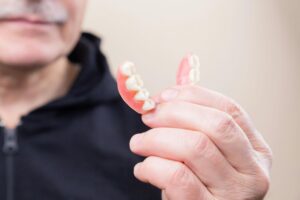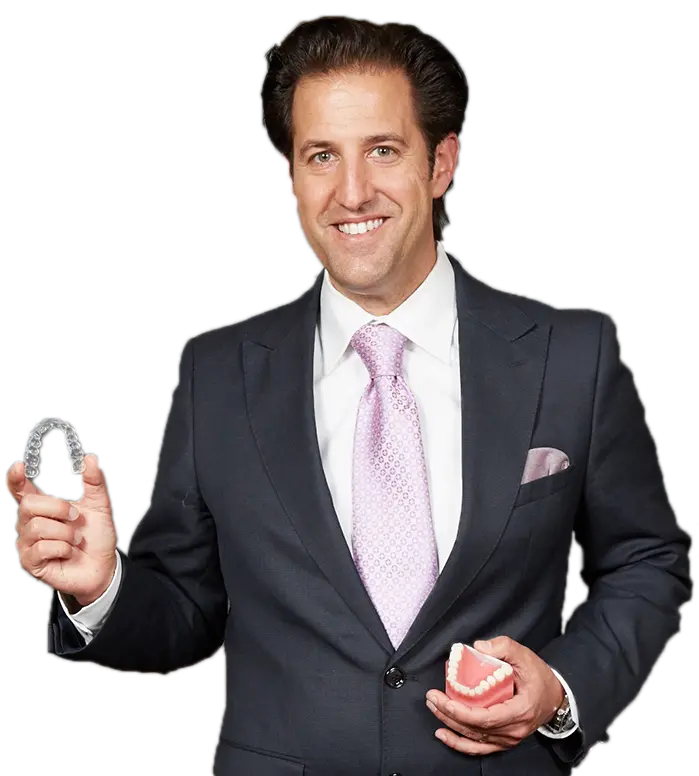Invisalign for Partial Dentures: Can You Combine Treatments?
Many people want straighter teeth but have already lost some due to age, injury, or other dental issues. This leads to an important question—can Invisalign with dentures be an option? Patients with partial dentures may still have enough natural teeth to consider orthodontic treatment, but the combination comes with challenges.
The answer depends on several factors, including the type of dentures and the condition of the remaining teeth. Some cases allow Invisalign and Invisalign teen dentures to work together, while others require alternative solutions. Understanding how these treatments interact can help in deciding the best path forward.
Understanding Invisalign and Partial Dentures

What Is Invisalign?
Invisalign is a clear aligner system designed to straighten teeth without metal braces. It works by applying gradual pressure to shift teeth into alignment. The treatment is commonly used for mild to moderate crowding, spacing, and bite issues.
Key Benefits of Invisalign:
- Nearly invisible, making it a discreet option.
- Removable, allowing for better oral hygiene.
- More comfortable than traditional braces due to the absence of brackets and wires.
What Are Partial Dentures?
Partial dentures replace missing teeth while preserving the natural ones that remain. They help restore function, prevent teeth from shifting, and maintain facial structure.
Types of Partial Dentures:
- Removable Partial Dentures: Can be taken out for cleaning and typically attach with clasps.
- Fixed Partial Dentures (Bridges): Cemented into place using crowns or dental implants.
These dentures are designed to blend with natural teeth, improving both appearance and functionality. However, they rely on the surrounding teeth for support, which may affect orthodontic treatment options.
Can You Wear Invisalign with Dentures?
Combining Invisalign with dentures is possible in some cases, but it depends on the patient’s dental structure. The biggest factor is the number of natural teeth left. Invisalign requires stable teeth to anchor the aligners, so if most or all teeth are missing, the treatment may not be effective.
Challenges of Using Invisalign with Dentures
Patients considering both treatments should be aware of these key challenges:
- Lack of Tooth Support: Invisalign relies on natural teeth to create movement. If dentures replace most teeth, there may not be enough support for the aligners to work.
- Removable Dentures Can Interfere: Traditional partial dentures are designed to fit securely, but wearing aligners alongside them may cause issues with stability and comfort.
- Bone and Gum Health Matters: Tooth loss leads to bone resorption over time. If the jawbone has changed significantly, aligners may not work as intended.
When Invisalign May Work with Partial Dentures
While challenges exist, some patients can still use Invisalign with dentures under specific conditions:
✔ Several Natural Teeth Remain: If enough stable teeth are present, aligners may be a viable option.
✔ Dentures Are Fixed (Bridges): Permanent bridges do not move, making them easier to combine with Invisalign.
✔ Orthodontist Approval: A professional evaluation can determine if adjustments or modifications make the treatment possible.
For those who qualify, Invisalign can improve alignment while partial dentures restore missing teeth. However, a thorough dental assessment is necessary before making a decision.
Factors to Consider Before Combining Invisalign and Partial Dentures

Choosing Invisalign with dentures requires careful evaluation. Several factors determine if the treatment will be successful. Patients should work with an orthodontist to assess their specific case.
Type of Dentures
The kind of dentures a patient has plays a big role in determining compatibility with Invisalign.
- Removable Partial Dentures: These can shift while wearing aligners, making treatment difficult. Some adjustments may be necessary.
- Fixed Partial Dentures (Bridges): These are cemented in place, which allows Invisalign to work more predictably.
Number of Missing Teeth
The more natural teeth a patient has, the better Invisalign can function. Aligners need stable teeth to apply pressure and move them into alignment. If only a few teeth remain, other orthodontic options may be more effective.
Oral Health Status
A healthy mouth is essential before starting Invisalign. Important factors include:
- Gum Health: Periodontal disease can weaken teeth and affect movement.
- Bone Density: Jawbone strength impacts how well aligners can shift teeth.
- Existing Dental Work: Crowns, implants, and bridges may require special considerations.
Consultation with an Orthodontist
A professional evaluation is the best way to determine if Invisalign can work with dentures. An orthodontist will examine dental records, take scans, and assess tooth stability before recommending a treatment plan.
Patients should discuss their goals, ask about potential risks, and explore alternative solutions if Invisalign isn’t the best fit.
Alternatives to Invisalign for Patients with Partial Dentures
For those who cannot use Invisalign with dentures, there are other ways to straighten teeth. Some alternatives may be more effective depending on the number of missing teeth and overall oral health.
1. Traditional Braces
- Metal or ceramic braces can work even when some teeth are missing.
- Brackets attach to existing teeth, providing more stability than aligners.
- Orthodontists can modify the treatment to work around dentures.
2. Dental Implants Before Orthodontic Treatment
- Implants replace missing teeth with a permanent solution.
- Once the implants heal, braces or clear aligners can be used to straighten natural teeth.
- This option requires healthy bone structure for implant placement.
3. Retainers and Other Orthodontic Appliances
- Retainers can help prevent further shifting of teeth.
- Some appliances, like expanders or partial braces, may offer minor adjustments.
- These options are usually for mild alignment concerns.
4. Combining Treatments
- Some patients benefit from a mix of treatments, such as using braces before getting implants or dentures.
- A customized approach may offer better long-term results.
Since every case is different, an orthodontist can recommend the most effective solution based on dental health and treatment goals.
Benefits and Drawbacks of Invisalign with Dentures
Using Invisalign with dentures comes with advantages and challenges. For some, it may provide a discreet way to improve alignment, but not every patient is a good candidate.
Potential Benefits
✔ More Discreet Than Braces – Invisalign aligners are clear, making them less noticeable than metal braces.
✔ Comfortable and Removable – Unlike traditional braces, aligners can be taken out while eating or cleaning teeth.
✔ May Work with Partial Dentures – If enough natural teeth remain, Invisalign can still function effectively.
✔ Helps Prevent Further Shifting – Straightening existing teeth can improve stability and prevent additional movement.
Possible Drawbacks
❌ Not Suitable for Severe Tooth Loss – If too many teeth are missing, aligners may not have enough support to work.
❌ Removable Dentures Can Cause Fit Issues – Aligners and partial dentures may not sit comfortably together, requiring adjustments.
❌ Longer or More Complex Treatment – Some cases may take longer or need a combination of treatments to achieve the best results.
Invisalign can be a good option for some patients with dentures, but an orthodontic consultation is necessary to determine if it’s the right choice.
FAQs About Invisalign with Dentures
Many patients have questions about combining Invisalign with dentures. Below are some of the most common concerns and their answers.
Q1: Can Invisalign work if I have missing teeth?
Yes, but it depends on how many teeth are missing. Invisalign needs stable teeth to move properly. If only a few teeth are missing and partial dentures are used, treatment may still be possible.
Q2: Will my dentures affect the movement of my teeth with Invisalign?
Removable dentures can interfere with aligners, as both need space in the mouth. Fixed dentures or bridges are less likely to cause problems since they stay in place. An orthodontist can determine if adjustments are needed.
Q3: Are there any risks in using Invisalign with partial dentures?
There can be challenges, such as aligners not fitting properly with dentures, discomfort, or ineffective movement of teeth. A thorough dental evaluation helps reduce risks.
Q4: What should I ask my orthodontist before starting treatment?
Patients should ask:
- Am I a good candidate for Invisalign with dentures?
- Will my dentures need adjustments during treatment?
- Are there better alternatives for my case?
- What results can I realistically expect?
Consulting an experienced orthodontist ensures that the right treatment plan is chosen.
Conclusion: Is Invisalign with Dentures the Right Choice for You?
Invisalign with dentures is possible for some patients, but success depends on the number of natural teeth remaining, the type of dentures used, and overall oral health. While fixed partial dentures may allow for smoother treatment, removable dentures can create challenges. A professional evaluation is the best way to determine if Invisalign is a viable option.
If Invisalign isn’t the right fit, alternatives like traditional braces, dental implants, or other orthodontic solutions may be available. The key is working with an experienced orthodontist who understands complex cases and can recommend the best approach.
For those considering Invisalign, a consultation with a specialist ensures the most effective treatment plan. Speaking with an orthodontist who has extensive experience with Invisalign will provide clarity and help in making the best decision for long-term dental health.
Expert Invisalign Treatment Starts Here
If you’ve been considering Invisalign but worry about how it works with dentures, expert guidance makes all the difference. At West Windsor Orthodontics, we specialize in advanced Invisalign treatment, ensuring every patient receives care suited to their unique dental needs.
Dr. Jonathan Nicozisis is a nationally recognized leader in Invisalign treatment. With decades of experience, he has trained orthodontists worldwide and contributed to Invisalign’s development. His expertise means you won’t just get a standard treatment—you’ll receive care informed by cutting-edge techniques.
Don’t settle for uncertainty about your orthodontic options. Schedule a consultation with West Windsor Orthodontics today and take the first step toward a healthier, more confident smile.




